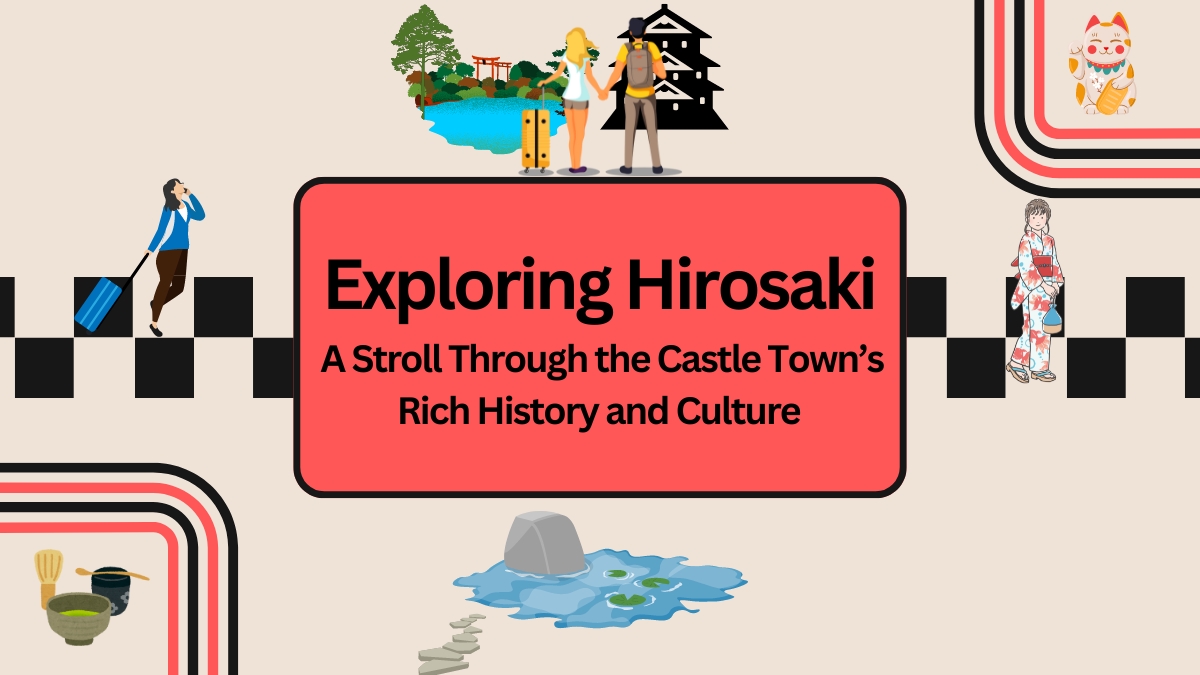Hirosaki, nestled in Aomori Prefecture, is a gem of cultural richness and historical depth, perfect for explorations on foot or by bicycle right from Hirosaki Station. Begin your adventure at the Hirosaki Museum of Contemporary Art, located in a historic brick warehouse that once served as a sake brewery. Just a short walk away, explore the Former Tōō Gijuku Missionary Residence, now a heritage site featuring a quaint café where you can enjoy a leisurely French lunch.
Continue to the Former Hirosaki City Library, a stunning example of Meiji-era architecture with its distinctively Western design influences. Nearby, immerse yourself in local traditions at Tsugaru-han Neputa Village, where the vibrant colors and sounds of the Neputa festival come to life. Conclude your central Hirosaki tour at the majestic Hirosaki Castle, surrounded by a park famed for its cherry blossoms and seasonal festivals.
This walkable route through Hirosaki’s core offers a perfect blend of art, history, and nature, all easily accessible from the city center. For those interested in venturing a bit further, Iwakiyama-jinja Shrine and Mount Iwaki, although not within immediate walking distance, are well worth the short trip to experience their spiritual and natural beauty.
Hirosaki Museum of Contemporary Art(弘前れんが倉庫美術館)
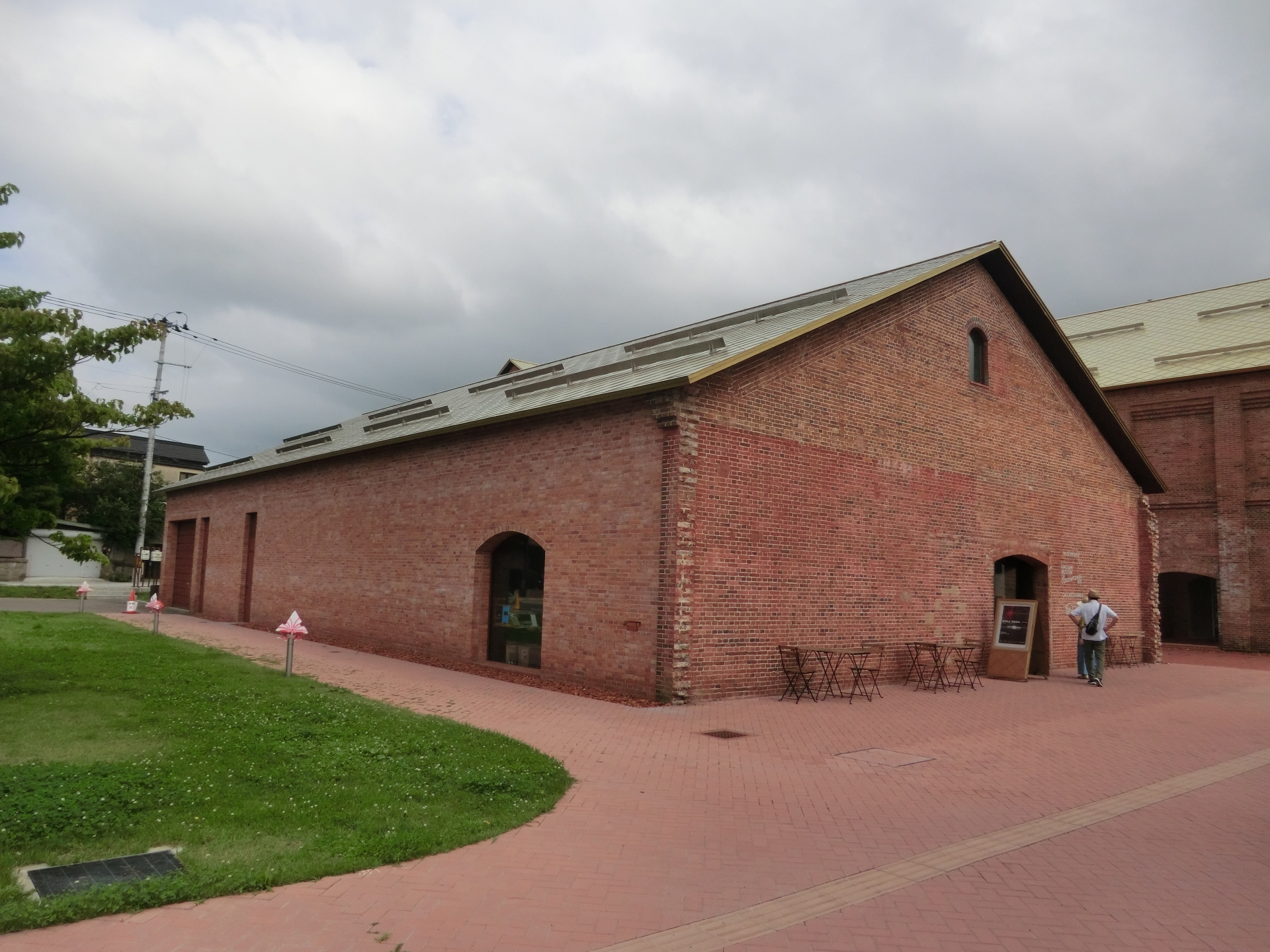
The Hirosaki Brick Warehouse Museum, originally constructed as a sake brewery during the Meiji and Taisho periods, utilizes the Yoshino-cho brick warehouse. This historic building has contributed to the region’s landscape as a modern industrial heritage site. Renovated under the concept of ‘continuity of memory,’ the museum showcases cutting-edge art from both Japan and abroad, while collecting and exhibiting contemporary works that confront the history and culture of Hirosaki and the Tohoku region. In addition to art exhibition rooms, the facility includes studios, a community gallery, and a library, hosting a variety of cultural activities.
The Hirosaki Brick Warehouse Museum is accessible by a 40-minute ride on the JR Ou Main Line from Shin-Aomori Station, followed by a 10-minute ride on the loop bus after alighting at Hirosaki Station.
Former Tōō Gijuku Missionary Residence(旧東奥義塾外人教師館)
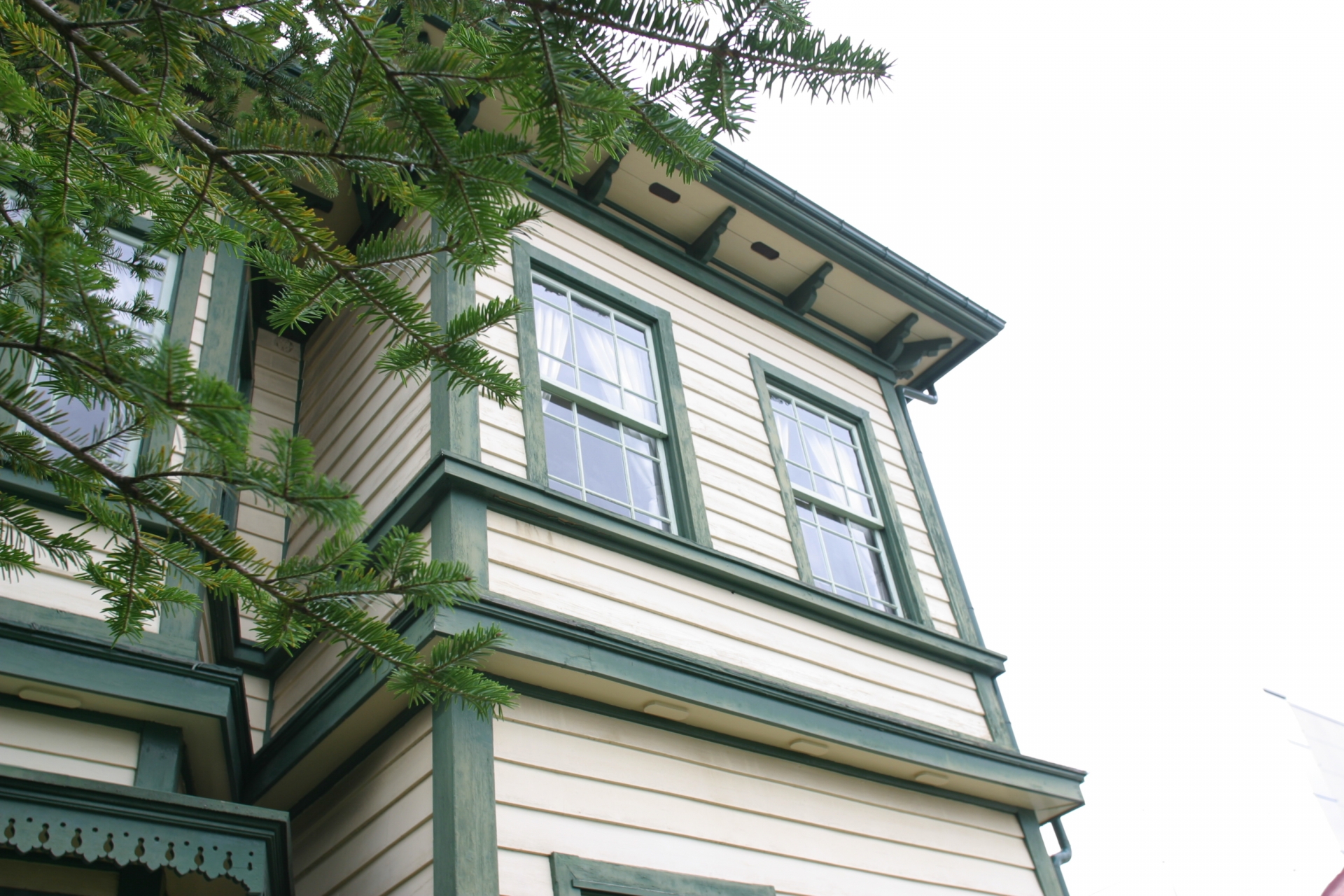
Former Tōō Gijuku Missionary Residence, located in Hirosaki, Aomori, is a heritage building that was originally built in 1900 to house foreign missionaries invited to teach at Tohoku Gijuku. This private school was established in 1872, evolving from Keikokan, a clan school of the Hirosaki domain. The residence, a Western-style building set on a brick foundation with numerous windows, is marked by its striking white exterior contrasted with olive-green window frames, adding charm with features like chimneys and bay windows.
Inside, the house has been meticulously preserved to reflect the lifestyle of foreign residents during the Meiji period, with antique furniture and fixtures placed throughout the spaces including a study, bedrooms, and a children’s room, all of which are open to the public for free. The ground floor hosts a café where visitors can relax and enjoy apple pie and coffee while gazing out at miniature buildings in the nearby Otemon Square.
This building is not only a significant piece of Aomori Prefecture’s heritage but also a delightful destination for those interested in the Meiji era’s cultural exchanges. Visiting this residence along with the adjacent former Hirosaki Municipal Library is highly recommended for a full appreciation of the area’s historical atmosphere.
Former Hirosaki City Library(旧弘前市立図書館)
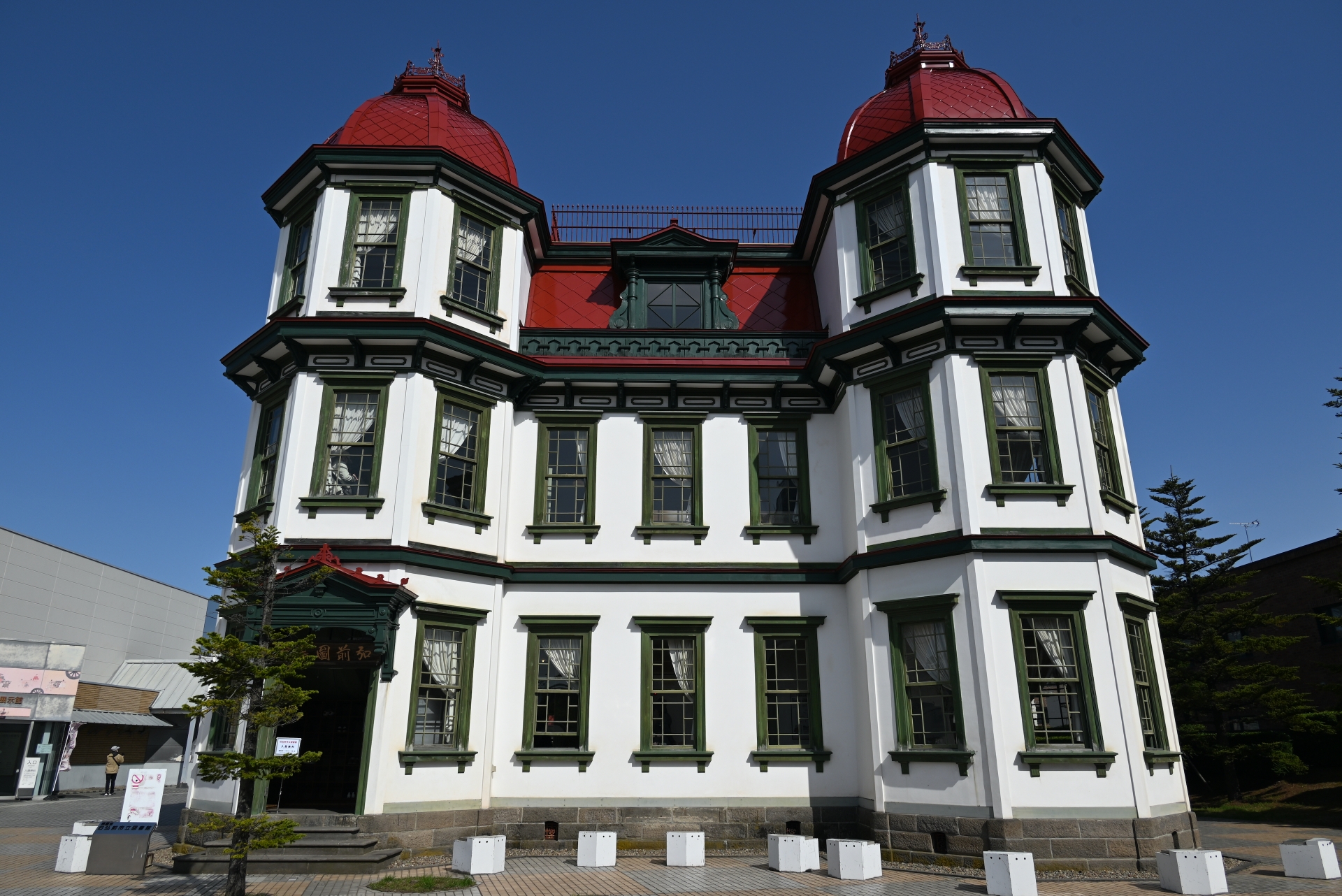
The Former Hirosaki City Library, constructed in 1906 to commemorate the victory in the Russo-Japanese War, served as a public library until 1931. This Meiji-era building, designed and built by the local master carpenter Horie Sakichi, is a prime example of Western-style architecture with Japanese influences. The structure is a wooden three-story building featuring impressive octagonal twin towers and a foundation made of stone. While it primarily embraces the Renaissance style, it incorporates traditional Japanese elements such as plastered walls and wooden nose-like projections typically found in temple architecture.
The exterior’s white plaster contrasts with the brick-colored iron sheet roofing, and details like the pediment over the entrance porch and the domed twin towers reflect Sakichi’s adeptness in Western architectural techniques. Inside, the building is preserved to reflect the original library setup, with the first floor restored to its former layout, including the director’s office and a women’s reading room, along with displays of relevant historical documents. The second floor features a local publications and zines display and a video-guided tour of literary monuments.
Free to the public, the interior offers a nostalgic journey back to the early 20th century, allowing visitors to appreciate a blend of Western and Japanese architectural styles that define this historically significant building, now designated as a prefectural treasure.
Tsugaru-han Neputa Village(津軽藩ねぷた村)

Dive into the rich cultural heritage of Tsugaru at a comprehensive facility that showcases the region through its arts, crafts, and flavors. At the Hirosaki Neputa House, you can admire a massive 10-meter tall Neputa float and observe its intricate internal framework. Experience the vibrant Neputa festival music firsthand with live flute and drum performances, and even participate in drum playing.
The Tsugaru Storehouse Workshop “Takumi,” set in a historical rice warehouse from the feudal era, offers a glimpse into the creation of Tsugaru kites and Tsugaru lacquerware. Additionally, live Tsugaru shamisen performances provide a captivating auditory experience.
Engage directly with Tsugaru’s traditional crafts through activities like painting goldfish Neputa, Tsugaru kite painting, apple-shaped bell painting, and Tsugaru pottery. No entry fee is required for shopping, where you can buy local agricultural products, souvenirs, and handicrafts, including fresh produce and handmade rice crackers from direct sales outlets and local artisans.
For a taste of local cuisine, visit the onsite eatery that serves simple, yet profound dishes such as rice, miso soup, and pickles, staples of the Tsugaru diet. This facility truly encapsulates the essence of Tsugaru’s cultural motto: “see, listen, eat, buy, and do,” offering visitors a full spectrum of regional experiences.
http://neputamura.com/tollarea/
Hirosaki Castle(弘前城)

Hirosaki Castle, located within Hirosaki Park, stands as the northernmost surviving castle tower in Japan and has been designated as an Important Cultural Property. The castle, along with its gates, bridges, and moats, exudes historical charm, making it a rare example of a large-scale fortress preserved in its original form and open as a public park.
The main keep, five castle gates, and three turrets are a must-see, with the Shimonori Bridge offering a perfect spot for photographing the castle, beautifully framed by the red-painted balustrades. Special attention should also be given to the shachihoko (a mythical creature with the head of a tiger and the body of a fish) adorning the third layer of the tower’s roof. Visitors can enjoy a leisurely tour of the expansive grounds by rickshaw, offering a graceful way to take in the various sights.
Hirosaki Park is renowned for its cherry blossoms, said to have been first planted in 1715 when a Tsugaru clan samurai imported 25 trees from Kyoto. Today, the park features around 2,600 cherry trees of approximately 50 varieties. The annual Hirosaki Cherry Blossom Festival, held from late April to early May, attracts about 2 million visitors from Japan and abroad. When the cherry blossoms begin to fall, creating a “flower raft” on the water’s surface in the outer moat, it presents a breathtaking scene reminiscent of a pink carpet.
Not just a spring destination, Hirosaki Castle also hosts the Hirosaki Castle Chrysanthemum and Autumn Leaf Festival in the fall and the Hirosaki Castle Snow Lantern Festival in the winter. The autumn brings vibrant foliage and elaborate chrysanthemum displays, while the winter features the elegant snow-covered castle and illuminated mini-kamakura (snow huts), offering a mystical atmosphere.
Additional winter attractions include the “Winter Blooming Sakura Light-up,” where cherry trees lining the park’s outer moat are illuminated, their snow-laden branches glowing pink as if the cherry blossoms have returned.
Nearby attractions include the Tsugaru-han Neputa Village, the exquisite Western-style Fujita Memorial Garden with its Japanese garden, and the historically styled Starbucks Coffee Hirosaki Park store. All are within walking distance and make perfect complements to a visit to this storied castle.
Fujita Memorial Garden(藤田記念庭園)
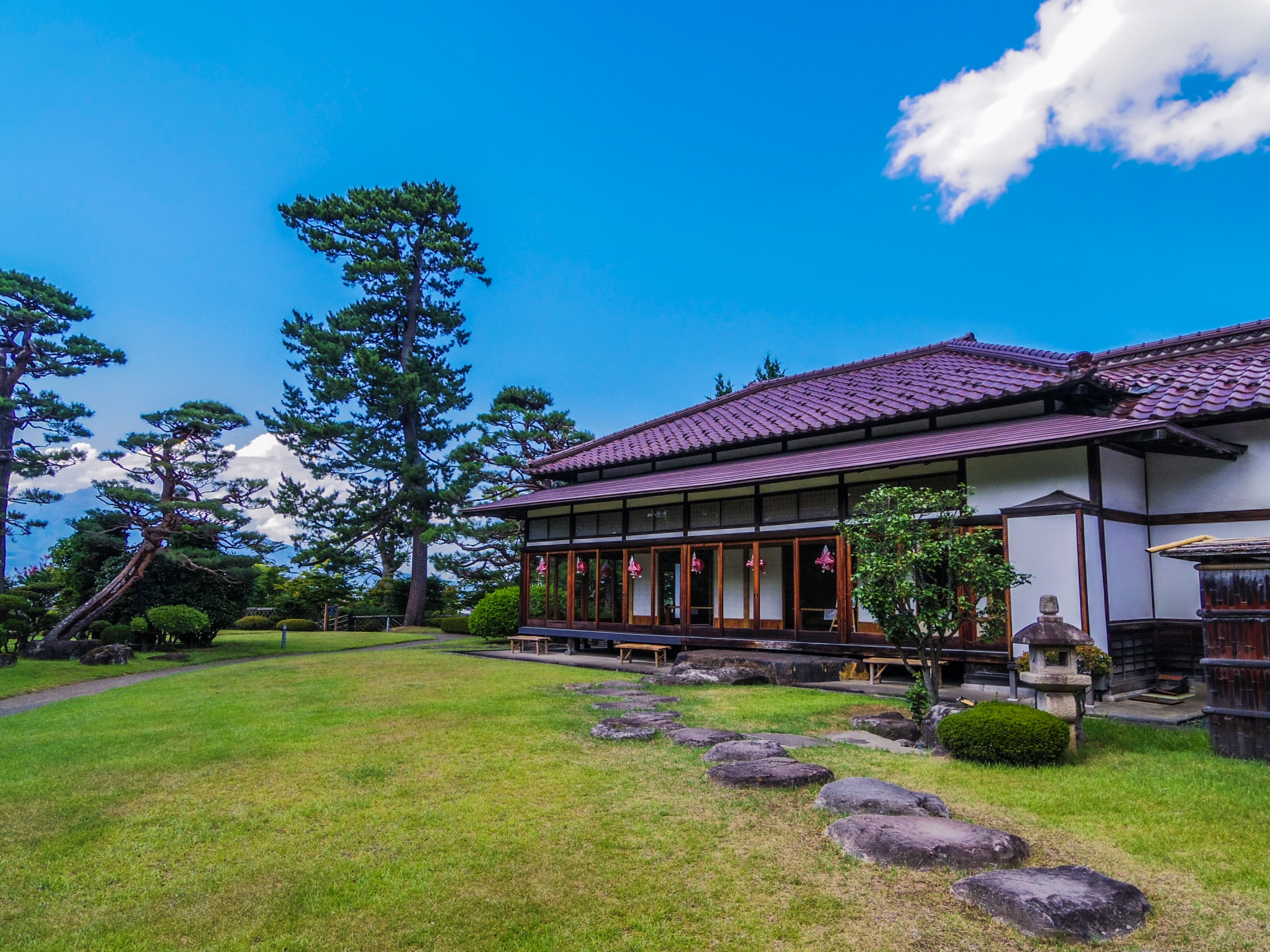
Fujita Memorial Garden, established in July 1991 to commemorate the 100th anniversary of Hirosaki City’s municipal organization, is a significant cultural site in Hirosaki. Originally constructed in 1919, the garden was designed by a gardener from Tokyo at the behest of Kenichi Fujita, the first chairman of the Japan Chamber of Commerce. It spans approximately 21,800 square meters, making it one of the largest gardens in the Tohoku region, second only to the gardens of Motsuji Temple in Hiraizumi.
The garden is cleverly divided into an upper plateau and a lower area, separated by a 13-meter-high cliff, each offering unique elements and perspectives. The upper garden area features a collection of buildings from the Taisho era, including a Western-style building, a Japanese-style residence, and an archaeological museum, all against the backdrop of Mount Iwaki. These structures are significant cultural assets that reminisce the era of modernization in the north. The lower garden area centers around a pond, creating a tranquil strolling pond garden. Visitors can enjoy the scenic beauty of irises, azaleas, a waterfall, and the Eight Bridges from a traditional tea house, making it an ideal spot for relaxation and reflection.
In addition to its rich history and beautiful landscapes, Fujita Memorial Garden offers several cultural experiences. The “Taisho Romantic Tea Room” located in the Western-style building with its distinctive red, pointed roof, features stained glass and a fireplace, providing a nostalgic atmosphere. The tea room overlooks the garden, offering a picturesque view of the seasons, and is known for its delightful apple pie tastings and apple and vanilla ice galettes. Furthermore, the former archaeological museum has been transformed into “Craft & Wa Cafe Takumi,” where visitors can indulge in Japanese-style parfaits, obanzai lunches, and shop for traditional Hirosaki crafts like “kogin-zashi” embroidery and “Tsugaru nuri” lacquerware.
Fujita Memorial Garden is not just a place to admire the beauty of nature and architecture but also a venue that offers a deep dive into the cultural heritage of Hirosaki, reflecting the city’s historical significance as a center of modernization. It continues to attract visitors with its blend of natural beauty and cultural richness, providing a serene environment to explore and appreciate.
Saishōin Temple(金剛山 最勝院)
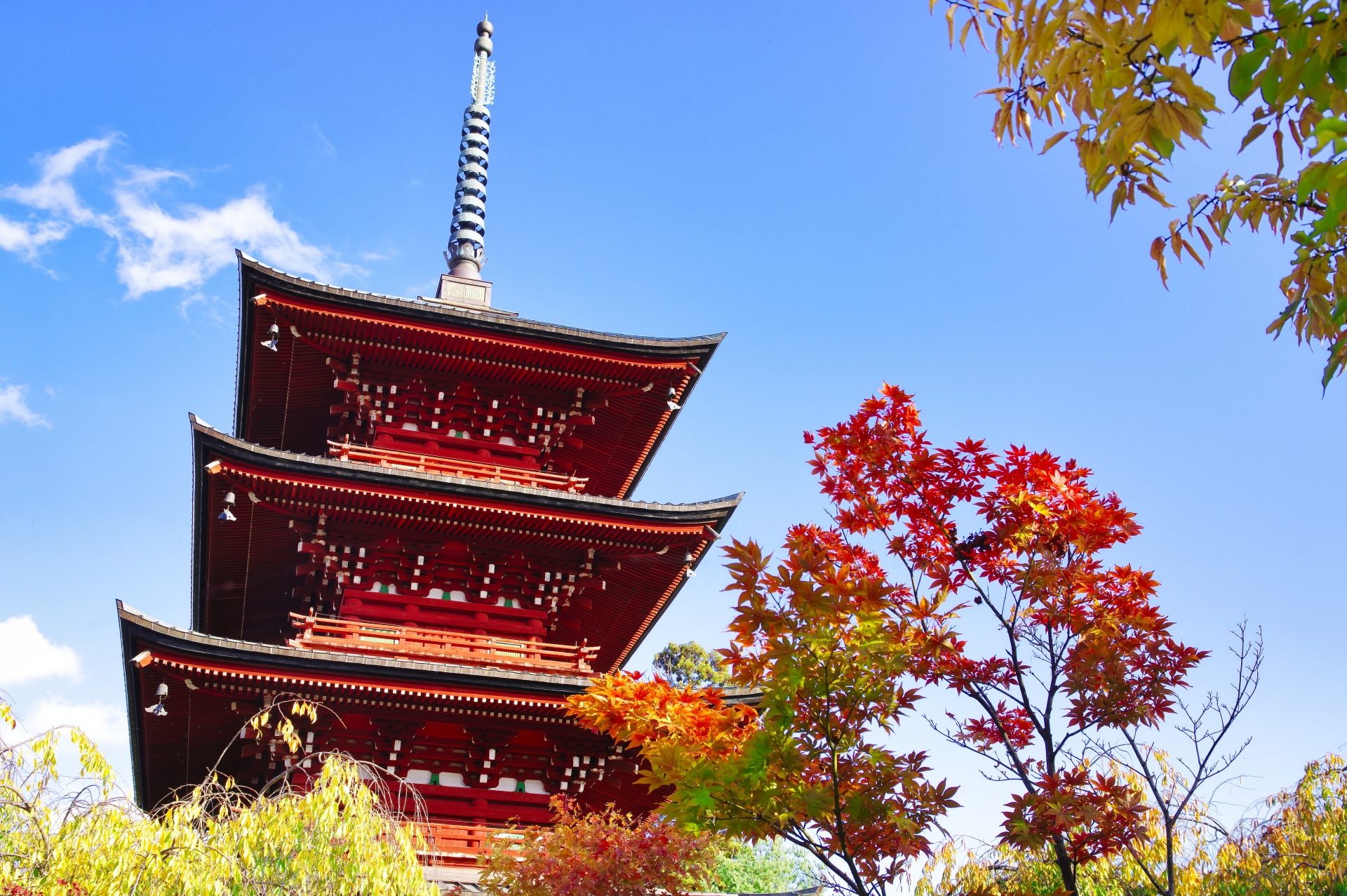
Located in the heart of Hirosaki City in Aomori Prefecture, Saisho-in is a distinguished temple renowned for its beautiful five-story pagoda, considered the finest in the Tohoku region and designated as a national Important Cultural Property. The pagoda was initiated by the third feudal lord, Nobuyoshi, in 1656 and completed in 1664 without the use of nails, a testament to the architectural skills of the Edo period. It underwent restoration after being damaged by Typhoon 19 in 1991, with works completing in 1994.
This pagoda was originally built to honor all who died in battle during the unification of Tsugaru, regardless of their side, embodying a spirit of reconciliation and peace. The pagoda stands 31.2 meters tall, making it a pivotal landmark within the temple grounds, which also house the imposing Nioh statues. These guardian figures, restored over four years and returned to their rightful place in 2023, reflect the skilled craftsmanship of Unkei’s lineage, with the original colorings from 400 years ago uncovered and preserved during the restoration.
Visitors entering the temple are first greeted by the Nioh-mon, where the restored Nioh statues stand guard, embodying centuries of vigilance over the people of Tsugaru and Hirosaki. The temple, a significant influence in the region during the feudal era, led the supervision of local shrines and was the foremost among the Tsugaru Shingon sect’s five major temples. Access to Saisho-in is convenient, located just a three-minute walk from the Hiroshige High School stop on the Konan bus from Hirosaki Station, making it a spiritually and culturally enriching visit for anyone exploring the area.
http://www15.plala.or.jp/SAISYOU/
Iwakiyama-jinja Shrine(岩木山神社)
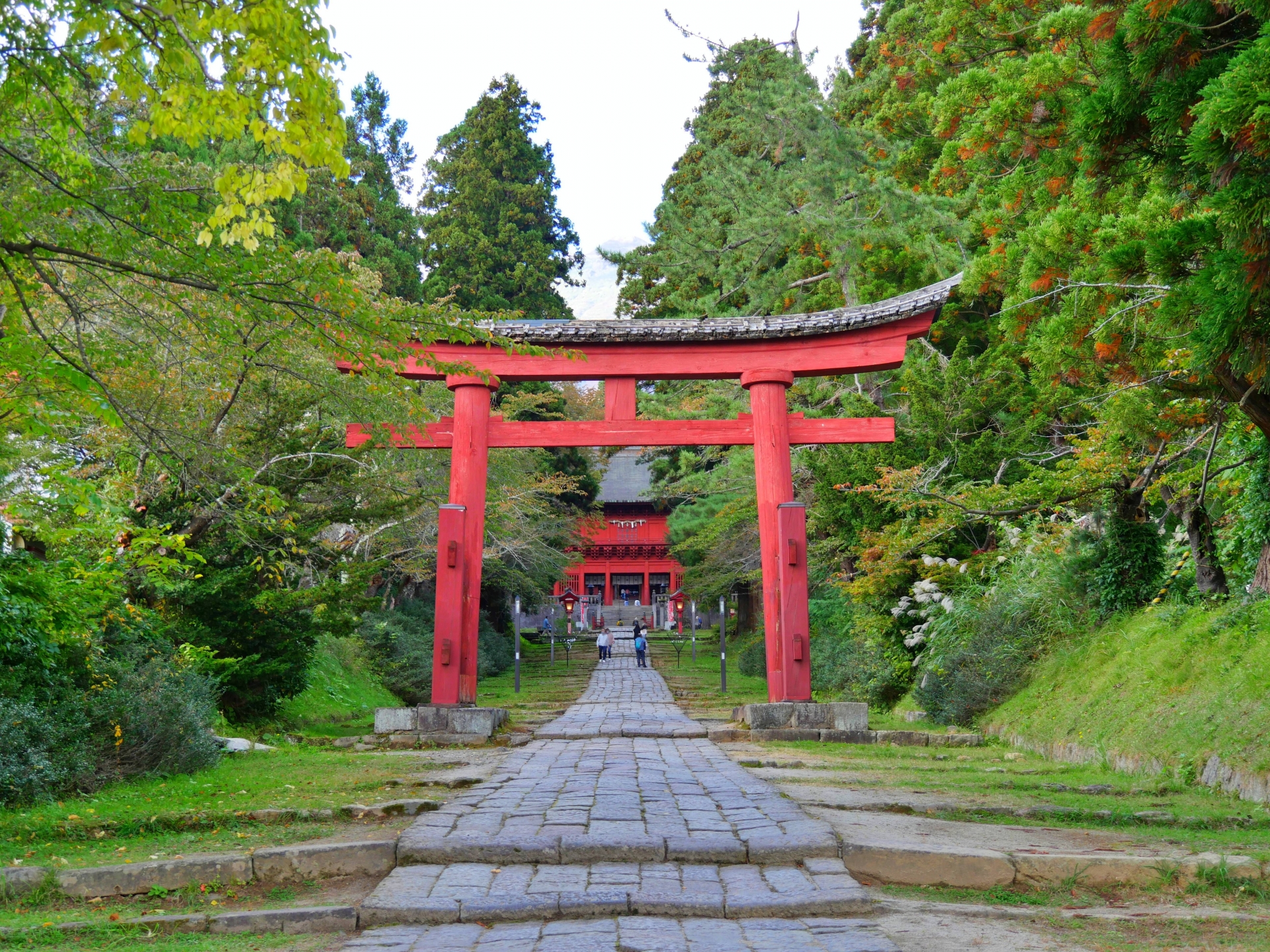
Iwakiyama Shrine, located at the foot of the beautiful Iwaki Mountain, also known as “Tsugaru Fuji,” boasts a history of over 1,200 years. The shrine uses locally sourced hiba wood for its structures, some of which have withstood harsh weather conditions for over 390 years. The long approach to the main sanctuary is surrounded by cedar groves, creating a mystical atmosphere.
After several fires, the shrine buildings were rebuilt during the feudal era and are so exquisite that they are referred to as the “Nikko of the North.” The annual mountain pilgrimage, centered around the old lunar calendar’s August 1st, is a focal point of faith for the Tsugaru region, deeply revered by the local community.
Iwakiyama Shrine is designated as a national Important Cultural Property, including the main hall, rear gate, sacred fence, worship hall, middle gate, and tower gate. As a prefectural treasure, it features a hanging lantern, a Japanese sword with the inscription “Soshu Jyu Tsunahiro,” and wooden Noh masks. The shrine office is also recognized as a prefectural important cultural property.
Access to the shrine is convenient: take the Karekidai line from JR Hirosaki Station and disembark at “Iwakiyama Shrine-mae,” which is right outside the station. This ancient shrine, with its historical significance and natural beauty, offers a serene and comforting place for visitors.
Mount Iwaki(岩木山)
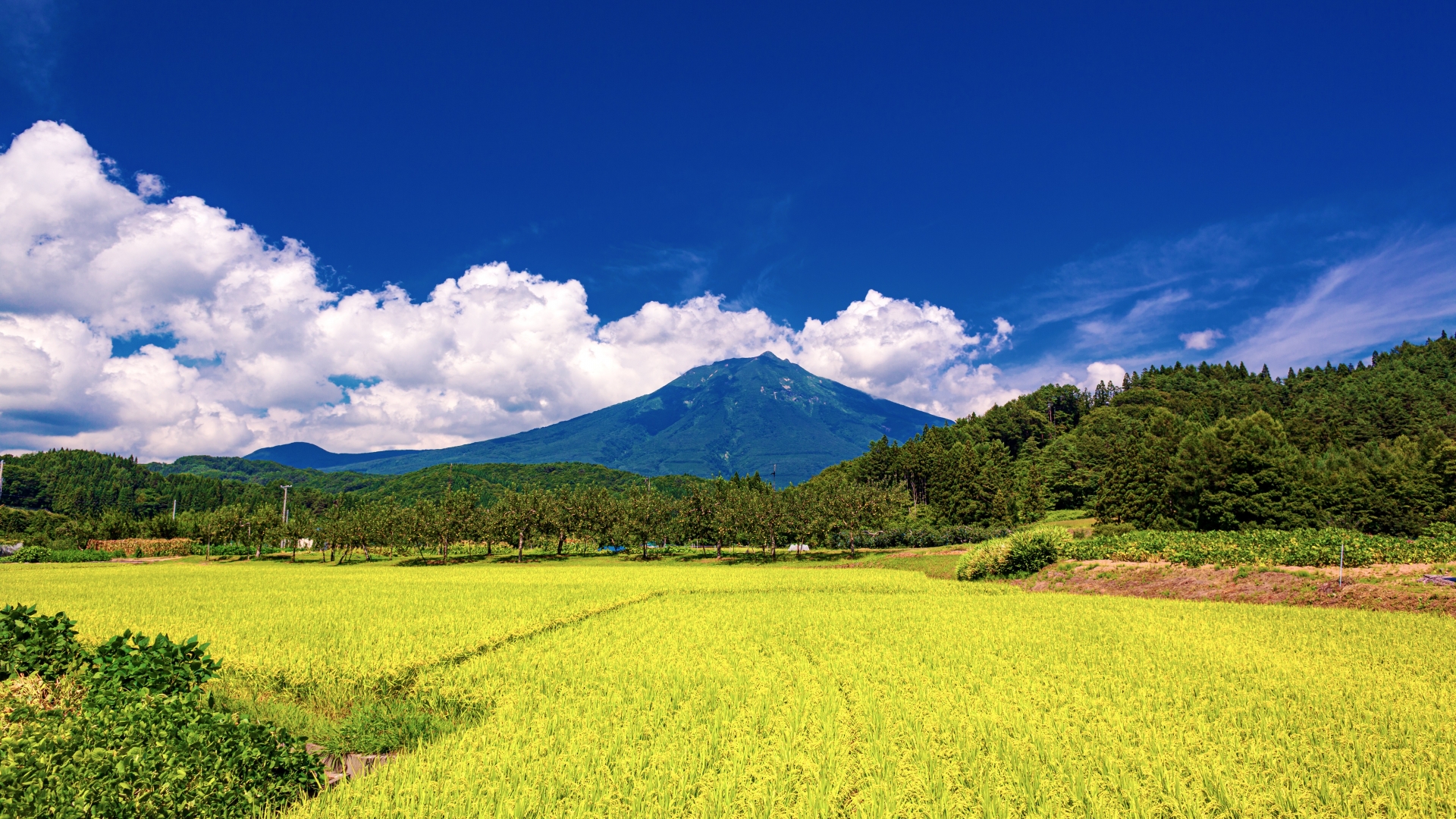
Mount Iwaki, towering at an elevation of 1,625 meters and often referred to as “Tsugaru Fuji,” dominates the landscape of Aomori Prefecture. Its base spreads across the Tsugaru Plain, making it a prominent feature visible from almost anywhere in the area. The mountain is not only the highest peak in the region but also a beloved symbol for the people of Tsugaru, who affectionately call it “Oiwaki-san.” It presents ever-changing, photogenic views throughout the seasons—from sprawling apple orchards and vibrant canola fields to expansive rice paddies and visiting swans.
As one of Japan’s Hundred Famous Mountains, Iwaki is accessible via the Tsugaru Iwaki Skyline, which reaches up to the eighth station, and a lift that goes up to the ninth station, allowing a moderate 40-minute trek to the summit. During June and July, the peak area blooms with the unique “Michinoku Kozakura” (also known as Iwaki Kozakura), a high mountain cherry blossom native to the area. The summit offers breathtaking panoramic views across the Aomori landscape, encompassing the Hakkoda Mountains, Gonzenzaki, and Jusanko on the Tsugaru Peninsula, extending as far as Matsumaezaki in Hokkaido.
The mountain features five distinct trails, catering to a diverse range of hikers from beginners to advanced climbers, with the possibility of combining a lift ride with a trek for a varied experience. At the base of the mountain, visitors can unwind in the numerous hot springs, with Dake Onsen known for its 20km-long cherry-lined road, claimed to be the world’s longest.
Iwakiyama Shrine, situated on the mountain, is central to the “Oyama Sankei,” a significant folk cultural property where participants clad in white pilgrimage attire ascend the mountain to the sounds of traditional mountain music. This event can be experienced through the “Let’s Walk Oyama Sankei” initiative. The Iwaki Mountain Lift operates from late April to late October, providing accessibility to the mountain with a schedule that accommodates various visitor needs, including reduced rates for groups and students, and free access for young children.
As the day closes in Hirosaki, reflections of a journey through its rich history and vibrant culture linger. Walking the streets where tradition meets modernity, you leave enriched by the city’s artistic and historical offerings. Beyond the city center, destinations like Iwakiyama-jinja Shrine and Mount Iwaki beckon for future explorations, ensuring Hirosaki remains not just a memory, but an invitation to return.
